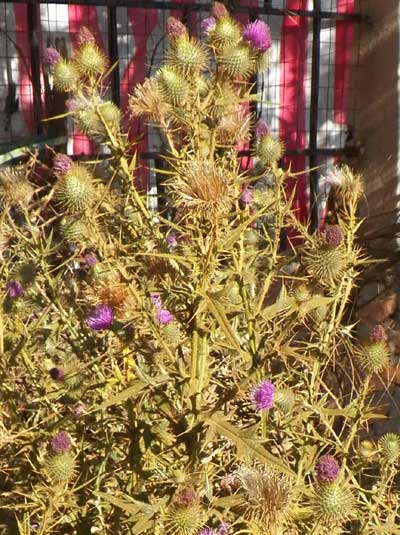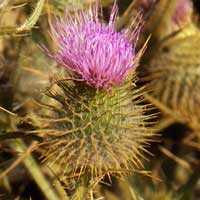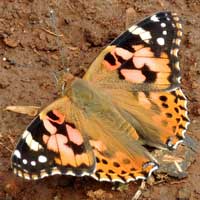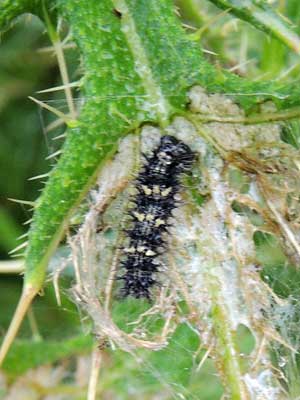Spear Thistle
Cirsium vulgare

Plants about 1½ meter tall growing in a fence row. Eldoret, Kenya. January 2012.
Common Thistle, or Spear Thistle, exists in Kenya as a sometimes troublesome weed in highland agricultural areas. It is native to cooler portions of Eurasia and probably found its way to Kenya among the various horticultural transplants from that same area. This plant is classified as an invasive weed throughout much of the world. Grazing animals are prevalent through much of Kenya and so those plants that resist grazing pressure are also the most common. By virtue of its numerous sharp spines, spear thistle is among them.


- Ray Flowers: Ray flowers are absent.
- Disc Flowers: Disc florets only. Each floret consists of a long tubular corolla and with many of them packed together in the head the appearance is as a pompon.
- Phyllaries: The bracts enclosing the flower head are hardened and form an inflated cone about the developing seeds. This enclosure is armed with long, very sharp prickles.
- Pappus: At top of each seed is a crown of long silky hairs. Winds carry the seeds away when the head matures and bursts open.
- Leaves: The basal leaves and larger and deeply cleft with long prickles at the terminus of each serration.

Larvae belonging to the Painted Lady Butterfly feed on the leaves and normally hide beneath a tent of silk and tied leaves.